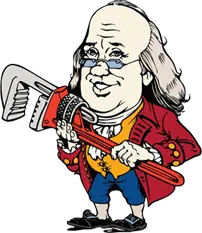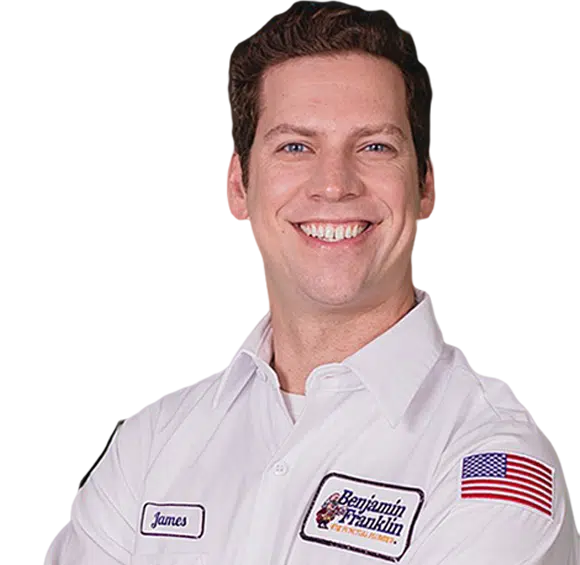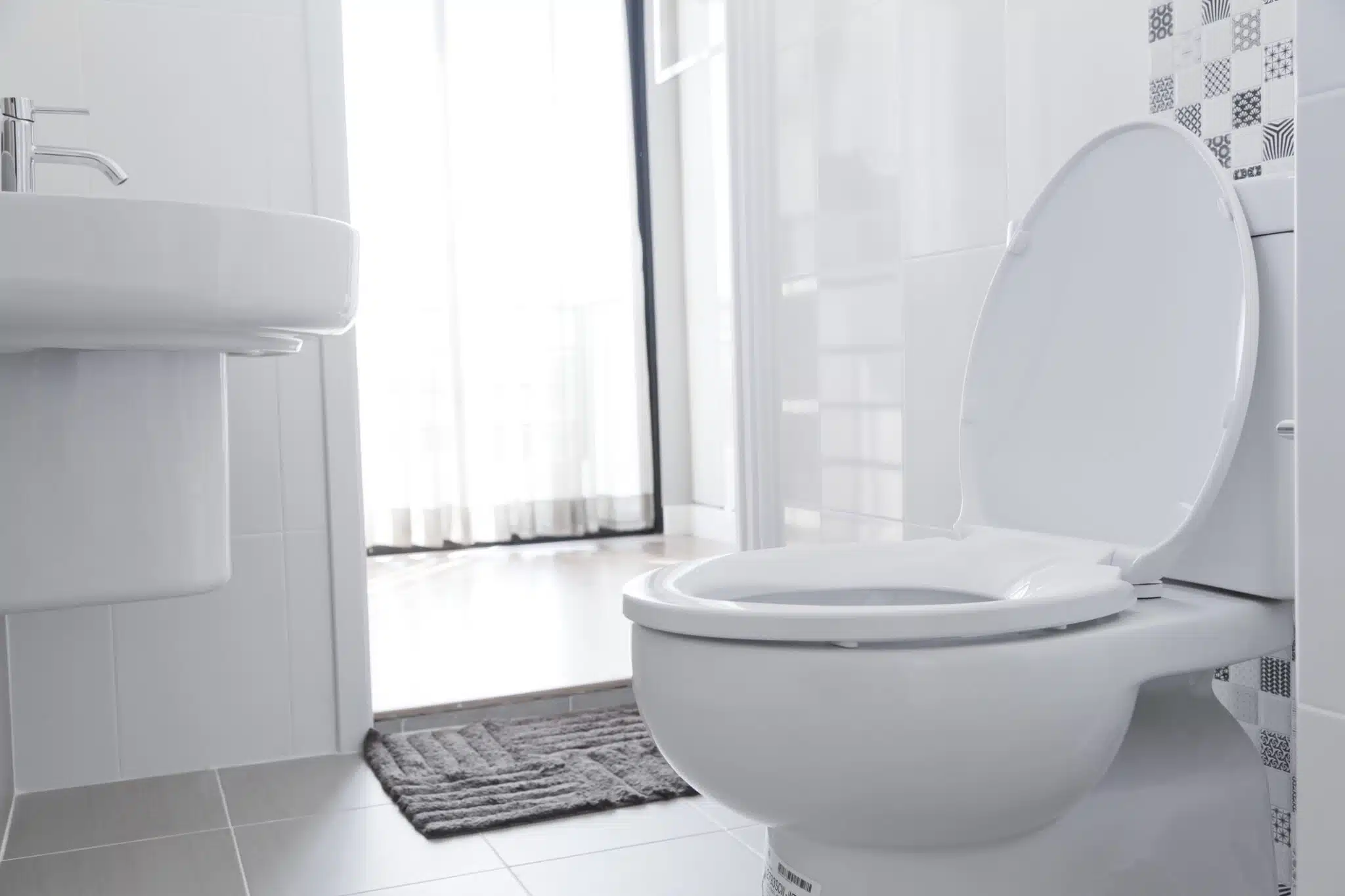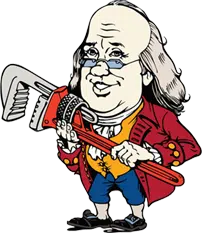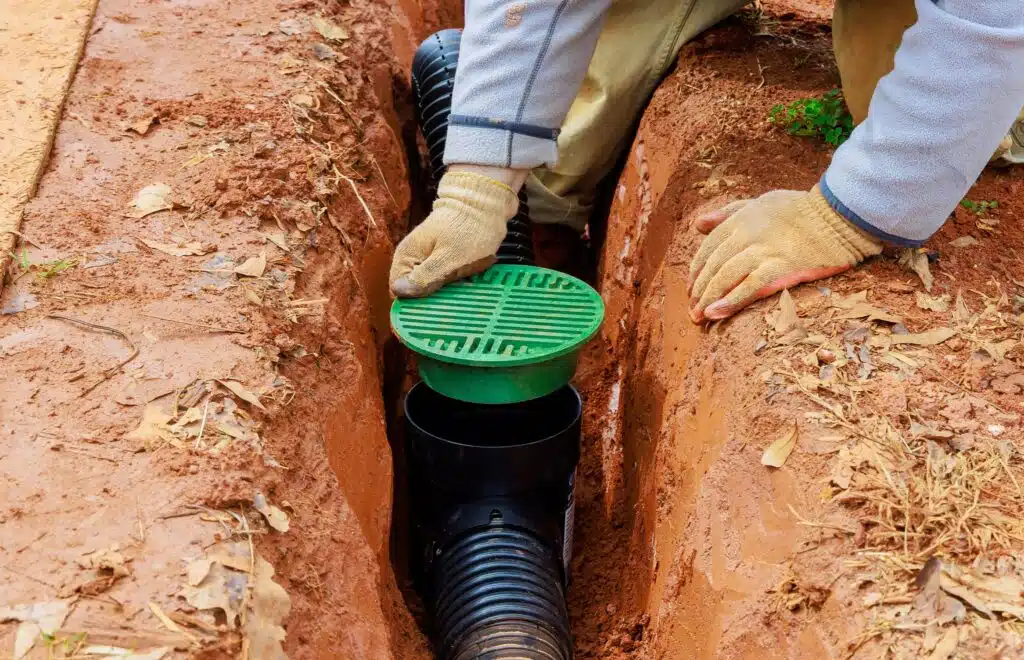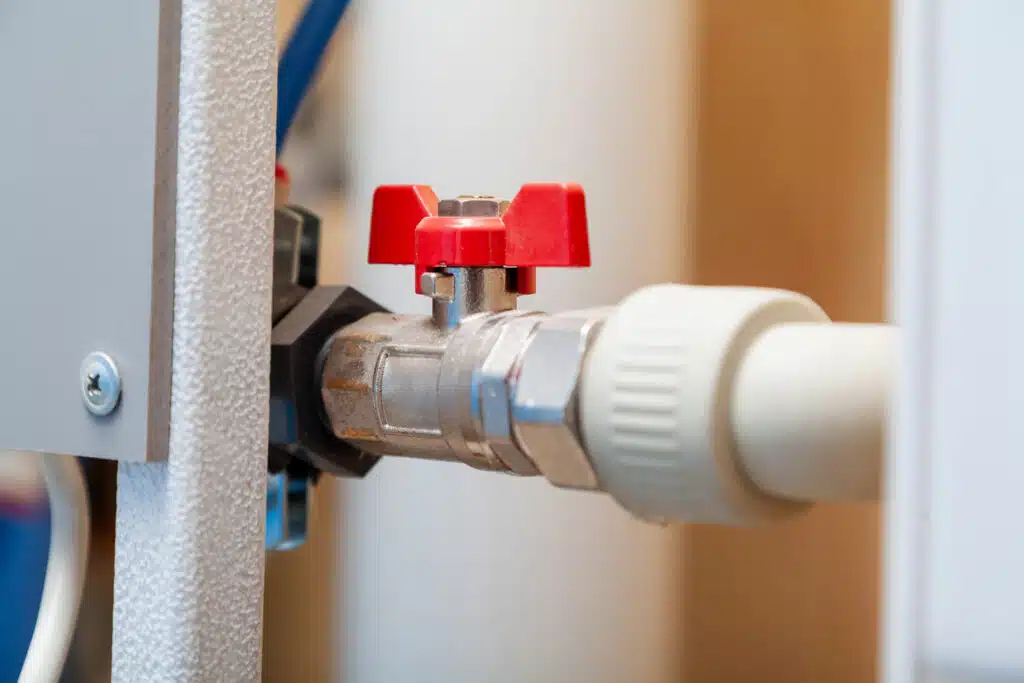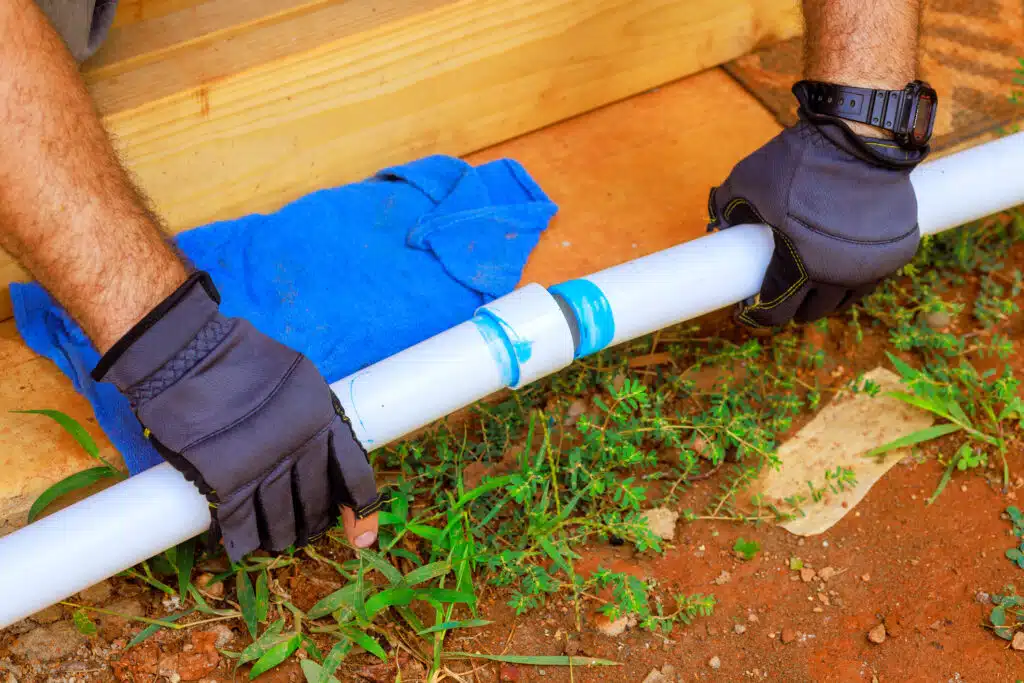A running toilet is more than just an annoyance—it can waste up to 200 gallons of water per day! Common causes include a worn-out flapper, a misaligned float, or mineral buildup inside the tank. To fix it, start by adjusting the float, replacing the flapper, or cleaning the fill valve. If these quick fixes don’t work, it may be time to call a professional. Addressing the issue promptly can save you money on water bills and prevent long-term damage.
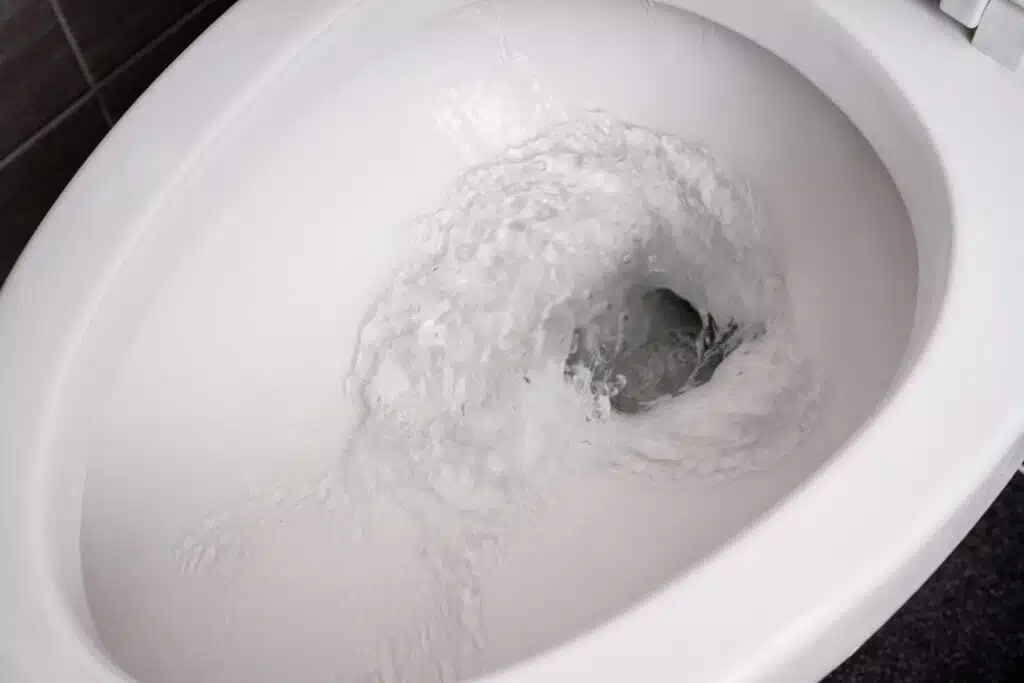
Are you wondering why your toilet keeps running long after you’ve flushed? Not only is that constant sound annoying, but it’s also a clear sign that something’s not working right inside your toilet tank.
And did you know that a running toilet can waste up to 200 gallons of water a day? Yikes! But before you call a plumber, let’s dive into what’s really going on. With a few simple steps, you can identify the issue and maybe even fix it yourself.
Common Causes of a Running Toilet
Understanding why your toilet keeps running can save you a lot of time, water, and frustration. Several things could be going wrong inside the tank, and knowing what to look for is key to solving the problem quickly.
The most common culprits include a faulty flapper, misaligned float, or mineral buildup inside the tank components. These might sound complicated, but don’t worry — each issue has a relatively simple fix once you know what to look for.
Here’s a quick look at the main reasons why your toilet won’t stop running:
- Worn-out Flapper: This small rubber seal controls the flow of water between the tank and the bowl. Over time, flappers can become old, cracked, or warped, preventing a tight seal. When this happens, water keeps leaking into the bowl, leading to that never-ending sound of running water.
- Improper Float Height: The float is what determines how much water refills in the tank. If it’s set too high, the water will rise above the designated level and continuously flow into the overflow tube. This not only causes the water to run non-stop but can also waste a significant amount each day.
- Mineral Buildup: Hard water can leave mineral deposits on the internal components, such as the fill valve or flapper, making them stick or malfunction. Over time, this buildup can prevent parts from moving smoothly, which disrupts the normal shut-off process.
By pinpointing the exact cause, you’ll be able to tackle the problem with confidence and maybe avoid an expensive call to a plumber.
Identifying the Problem
Before diving into repairs, it’s important to pinpoint what’s causing your toilet to run. Fortunately, you don’t need to be a plumbing expert to figure it out!
A few simple observations will help you identify the issue so you can fix it quickly. Let’s start by checking for any unusual sounds, inspecting the tank components, and observing the water levels.
Listening for Sounds
First, put on your detective hat and listen closely. Constant hissing sounds typically indicate an issue with the fill valve not sealing properly. This means water is leaking into the tank even after the refill should have stopped.
On the other hand, gurgling or bubbling noises are often signs that the flapper isn’t closing fully or that the float is set too high, allowing water to overflow into the tube.
Listening to these subtle sounds will help pinpoint what needs attention, making troubleshooting much easier.
Checking the Tank Components
Next, remove the lid of your toilet tank (don’t worry, it’s just clean water inside!) and take a look at the internal parts. Check to see if the flapper is sealing properly at the bottom of the tank or if the chain connecting it to the flush handle is tangled or too tight.
If the chain is too short, the flapper can’t fully seal, which will cause continuous water leakage. Also, inspect the float to ensure it moves freely without getting stuck, as a stuck float can lead to overfilling.
Observing Water Levels
Finally, check the water level in the tank, which should sit about an inch below the top of the overflow tube (the tall, open pipe inside the tank). If the water is above the tube, it will continuously flow into it, causing your toilet to run non-stop.
If it’s too low, the flapper may not have enough pressure to stay closed, leading to similar issues. Observing these water levels will help you decide whether you need to adjust the float or replace other components.
Quick Fixes for a Running Toilet
Once you’ve identified what’s causing your toilet to keep running, it’s time to roll up your sleeves and get it fixed. Thankfully, many running toilet problems can be solved with a few easy adjustments that require no special tools.
In most cases, a quick tweak to the float, a simple flapper replacement, or a bit of cleaning can do the trick. Let’s take a look at three common fixes that can get your toilet back to normal in no time.
Adjusting the Float
The float inside the tank controls how many water refills there are after each flush. If it’s set too high, it will cause water to continuously flow into the overflow tube, leading to constant running.
To fix this, try lowering the float by gently bending the float arm downward or adjusting the screw on top of the fill valve (if your model uses a newer type of float). Lowering the float will reduce the water level and stop the overflow. Just be sure the water level is still high enough to allow a complete flush.
Tightening or Replacing the Flapper
If the flapper is the issue, it might not be sealing properly against the flush valve. First, turn off the water supply to your toilet, then drain the tank. Check if the flapper is cracked, warped, or has buildup around the seal.
If so, it’s best to replace it — these are inexpensive and can be found at any hardware store. To install a new one, simply unhook the old flapper from the flush handle chain and replace it with the new one, making sure it aligns correctly over the valve.
Cleaning the Fill Valve
Sometimes, mineral buildup inside the fill valve can cause it to malfunction, resulting in continuous running. To clean it, turn off the water supply and flush the toilet to empty the tank.
Remove the cap of the fill valve and rinse it under water to clear out any sediment. Use a brush or a rag to gently scrub away any visible buildup.
After reassembling the valve, turn the water back on and see if the problem is resolved. If the valve is still acting up, you might need to replace it altogether.
Advanced Troubleshooting
If the quick fixes didn’t solve the problem, it’s time to dive a bit deeper into troubleshooting. Some issues can be a bit more complex, but with patience, you can still handle them yourself.
This section will guide you through more detailed checks and adjustments, like inspecting the fill valve, clearing the trap, or examining the overflow tube. Taking these steps will help you tackle even the trickiest problems without needing a professional.
Examining the Fill Valve
The fill valve is responsible for controlling the flow of water into the tank. If it’s not functioning correctly, it can cause water to keep flowing long after the tank should be full. Start by turning off the water supply and flushing to empty the tank.
Remove the cap of the fill valve and check for any visible damage or debris. If you notice mineral deposits, clean them off and reassemble the valve.
If it’s still not working properly, consider replacing the valve entirely — it’s a relatively inexpensive fix that can make a big difference.
Clearing the Toilet Trap
If your issue involves sluggish flushing along with constant running, the trap might be partially blocked. The toilet trap is the curved part of the pipe that’s meant to hold water and prevent sewer gases from coming up.
A partial blockage can create enough backflow to cause improper functioning. To clear it, use a plunger or plumbing snake to dislodge any clogs. This can improve the flow and may stop the continuous running if water is backing up into the tank.
Inspecting the Overflow Tube
The overflow tube is a vertical pipe located in the center of the tank, designed to prevent water from spilling out if the tank overfills. If the water level is too high, it will constantly flow into this tube, making it seem like your toilet is running endlessly.
To fix this, adjust the float so that the water sits about an inch below the top of the tube. If the tube itself is cracked or damaged, it will need to be replaced to ensure proper functioning.
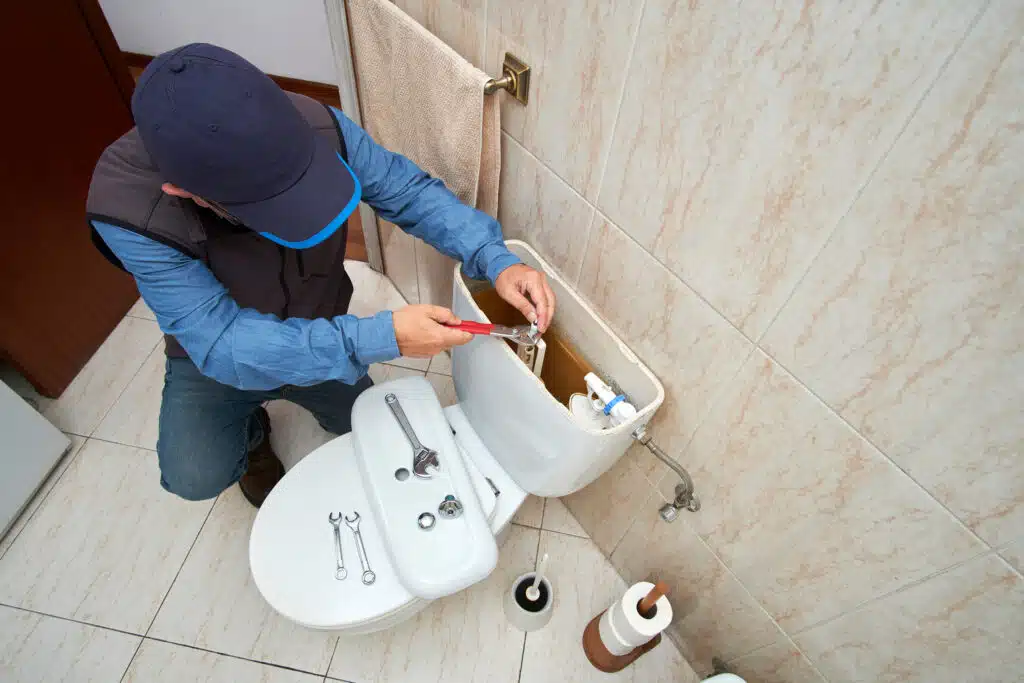
When to Call a Professional
Sometimes, even after trying all the DIY fixes, the problem persists in your toilet. At this point, it’s a good idea to bring in a professional plumber. Knowing when to call for help can save you a lot of time, water, and frustration in the long run.
If the issue involves more complex parts like the internal piping, or if you notice leaks around the base, it’s likely a job for an expert. Let’s explore a few signs that tell you it’s time to get a pro involved.
Signs You Need Expert Help
If you’ve tried all the adjustments and replacements, but the problem continues, it’s probably beyond a quick DIY fix. For instance, if water is leaking from underneath the fixture or around its base, there could be a more serious problem with the wax seal or the internal pipes.
Additionally, if the water keeps overflowing despite adjusting the float, or if you hear loud, unusual noises when flushing, these are strong indicators that something more complex is going on. In these cases, calling a plumber will ensure that the root cause is identified and resolved properly.
Choosing the Right Plumber
Finding a reliable plumber in Lancaster, PA, York, PA, or Harrisburg, PA can feel overwhelming, but a few quick tips can help. Look for professionals who have a solid reputation and plenty of positive reviews online.
Choose someone who is licensed, insured, and experienced in handling residential plumbing issues. Make sure to ask about their rates upfront and see if they offer a warranty on their work. A good plumber will diagnose the issue quickly and provide a solution that lasts.
Preventive Maintenance Tips
Preventing issues before they start is always better than dealing with unexpected problems down the road. Regular maintenance can extend the lifespan of your bathroom fixtures and keep everything running smoothly.
Whether you’re dealing with a new installation or an older model, a little extra attention can go a long way. Here are a few simple preventive maintenance tips to help keep your fixture in top shape and avoid costly repairs.
Regular Inspections
Make it a habit to check your bathroom fixtures every few months, even if everything seems to be working fine. Look inside the tank to see if any parts, like the flapper or float, are showing signs of wear or if there’s any mineral buildup.
A quick inspection can catch small problems before they turn into bigger headaches. Also, keep an ear out for any unusual sounds, such as hissing or water trickling, which can indicate a potential issue.
Understanding Your Fixture’s Parts
The more you know about how your fixture works, the easier it is to spot when something’s not right. Take a few minutes to learn about each component, such as the flapper, fill valve, overflow tube, and float.
When you’re familiar with what these parts do, troubleshooting becomes a lot simpler. Plus, you’ll feel more confident tackling minor repairs yourself, which can save you time and money.
Using Quality Products
When replacing any parts, always use quality products from reputable brands. Cheaper options might save you a few bucks upfront, but they can wear out quickly, leading to repeated repairs and unnecessary headaches.
Investing in better-quality components will ensure smoother operation, tighter seals, and long-term reliability. Below are some reasons why using high-quality parts is worth it:
- Longer Lifespan: Durable materials last longer and won’t degrade as quickly as cheaper options. This means you won’t have to replace parts as frequently, saving you money in the long run.
- Tighter Seals: High-quality flappers, washers, and fill valves offer a more precise fit and create a stronger seal, preventing leaks and the constant sound of running water.
- Smooth Operation: Premium parts move more freely, reducing the risk of sticking, jamming, or incomplete flushing. This ensures that your fixture operates correctly every time without you needing to fiddle with it.
- Fewer Repairs: Because they’re built to last, you’ll spend less time and effort making repairs, freeing you up from dealing with frustrating issues and keeping your fixture running efficiently.
So, while opting for cheaper parts might seem like a quick solution, you’ll get more peace of mind and fewer issues in the long run by choosing quality components.
Tired of Dealing with a Running Toilet? Call Us Today!
If you’re fed up with the constant sound of water running or just can’t seem to fix it yourself, it’s time to get professional help.
At Benjamin Franklin Plumbing of Lancaster, we proudly serve Lancaster, York, and Harrisburg, PA, providing reliable plumbing solutions you can count on. Don’t wait until it gets worse—give us a call today and restore peace to your home!
FAQs About Running Toilets
Is a running toilet dangerous?
No, it’s not typically dangerous, but it can lead to bigger issues if left untreated. While it’s mostly just an annoying sound, it can cause your water bills to skyrocket and, over time, may even result in damage to the surrounding floor if there’s any hidden leakage.
How much water does a running toilet waste?
A running fixture can waste a surprising amount of water — anywhere from 200 to 400 gallons a day! Over a month, that’s thousands of gallons down the drain, which is not just bad for your wallet, but also for the environment.
Can I fix a running toilet myself?
Yes, in most cases, you can handle the repairs yourself. Issues like a misaligned float, a worn flapper, or a dirty fill valve can often be solved with a few simple tools and replacement parts. However, if the problem is more complicated, don’t hesitate to call a professional.
How do I know if the issue is severe?
If you notice water leaking from the base or if the water is still running after you’ve tried the basic fixes, it’s a sign that there might be a more serious issue at play. Unusual noises like banging or hissing can also indicate a deeper problem.
Why is my toilet still running after I replaced the flapper?
If replacing the flapper didn’t work, check the chain length and the float height. The chain could be too tight, preventing the flapper from sealing properly. Alternatively, the float might need to be adjusted to ensure the water stops filling at the right level.




